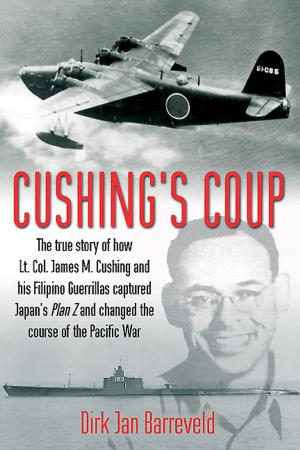Magnificent Disaster The Failure of Market Garden The Arnhem Operation September 1944
The Failure of Market Garden, The Arnhem Operation, September 1944
Nonfiction, History, Military, World War II| Author: | David Bennett | ISBN: | 9781935149972 |
| Publisher: | Casemate | Publication: | July 8, 2008 |
| Imprint: | Casemate | Language: | English |
| Author: | David Bennett |
| ISBN: | 9781935149972 |
| Publisher: | Casemate |
| Publication: | July 8, 2008 |
| Imprint: | Casemate |
| Language: | English |
After Normandy the most spectacular Allied offensive of World War II was Operation Market Garden which saw three divisions of paratroopers dropped behind German lines to be joined by massive armored columns breaking through the front. The ultimate object was to seize a crossing over the Rhine to outflank the heartland of the Third Reich and force a quick end to the war. The Operation utterly failed of course as the 1st British Airborne was practically wiped out the American 82nd and 101st Airborne Divisions became tied down in vicious combat for months and the vaunted armored columns were foiled at every turn by improvisational German defenses. In many circles the battle has become known as Hitlers last victory. In this work many years in the making Professor Bennett puts forward a complete balanced and comprehensive account of the British American Polish Canadian and German actions as well as the strategic background of the Operation in a way not yet done. He shows for example that rather than a bridgehead over the Rhine Montgomerys ultimate aim was to flank the Ruhr industrial area from the north. The book also deals as never before with the key role of all three Corps of British Second Army not just Horrocks central XXX Corps. For the first time we learn the dramatic untold story of how a single company of Canadian engineers achieved the evacuation of 1st Airbornes survivors back across the Rhine when all other efforts had failed. Also revealed is the scandal of how Polish General Sosabowski was humiliated insulted and dismissed by the mendacious hostility of the British military authorities. And the book shows too how the Operation would have failed at the outset but for the brilliant soldiery of the two American airborne divisions who overcame a variety of odds to achieve their objectives. Respectfully nodding to A Bridge Too Far and other excellent works on Market Garden the author has interviewed survivors walked the ground and performed prodigious archival research to increase our understanding of the battle. From the actions of the lowliest soldier to the highest commander Allied and German the Operation develops in highly readable style with the authors expert analysis unveiling new insights at every step.
After Normandy the most spectacular Allied offensive of World War II was Operation Market Garden which saw three divisions of paratroopers dropped behind German lines to be joined by massive armored columns breaking through the front. The ultimate object was to seize a crossing over the Rhine to outflank the heartland of the Third Reich and force a quick end to the war. The Operation utterly failed of course as the 1st British Airborne was practically wiped out the American 82nd and 101st Airborne Divisions became tied down in vicious combat for months and the vaunted armored columns were foiled at every turn by improvisational German defenses. In many circles the battle has become known as Hitlers last victory. In this work many years in the making Professor Bennett puts forward a complete balanced and comprehensive account of the British American Polish Canadian and German actions as well as the strategic background of the Operation in a way not yet done. He shows for example that rather than a bridgehead over the Rhine Montgomerys ultimate aim was to flank the Ruhr industrial area from the north. The book also deals as never before with the key role of all three Corps of British Second Army not just Horrocks central XXX Corps. For the first time we learn the dramatic untold story of how a single company of Canadian engineers achieved the evacuation of 1st Airbornes survivors back across the Rhine when all other efforts had failed. Also revealed is the scandal of how Polish General Sosabowski was humiliated insulted and dismissed by the mendacious hostility of the British military authorities. And the book shows too how the Operation would have failed at the outset but for the brilliant soldiery of the two American airborne divisions who overcame a variety of odds to achieve their objectives. Respectfully nodding to A Bridge Too Far and other excellent works on Market Garden the author has interviewed survivors walked the ground and performed prodigious archival research to increase our understanding of the battle. From the actions of the lowliest soldier to the highest commander Allied and German the Operation develops in highly readable style with the authors expert analysis unveiling new insights at every step.















